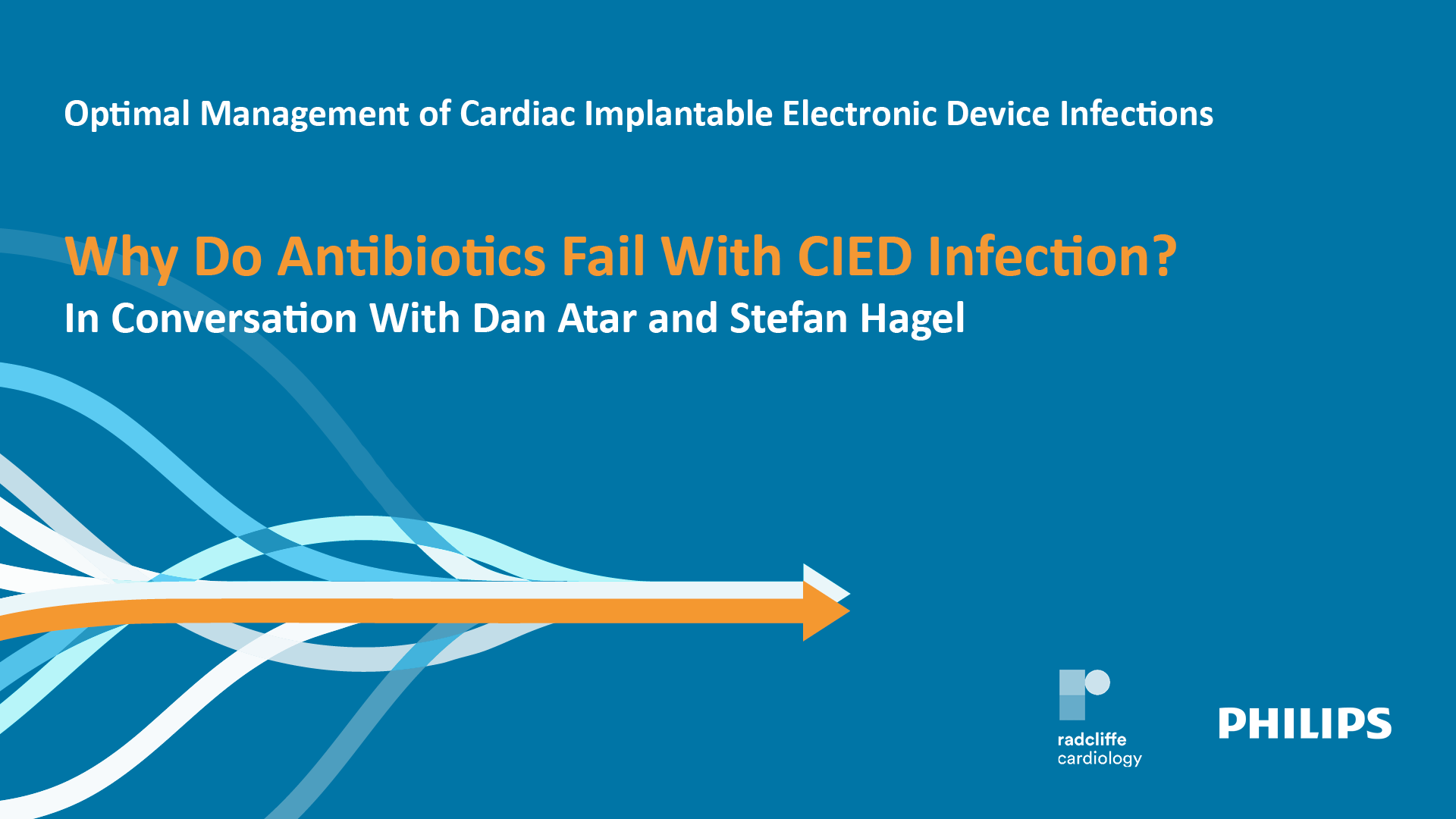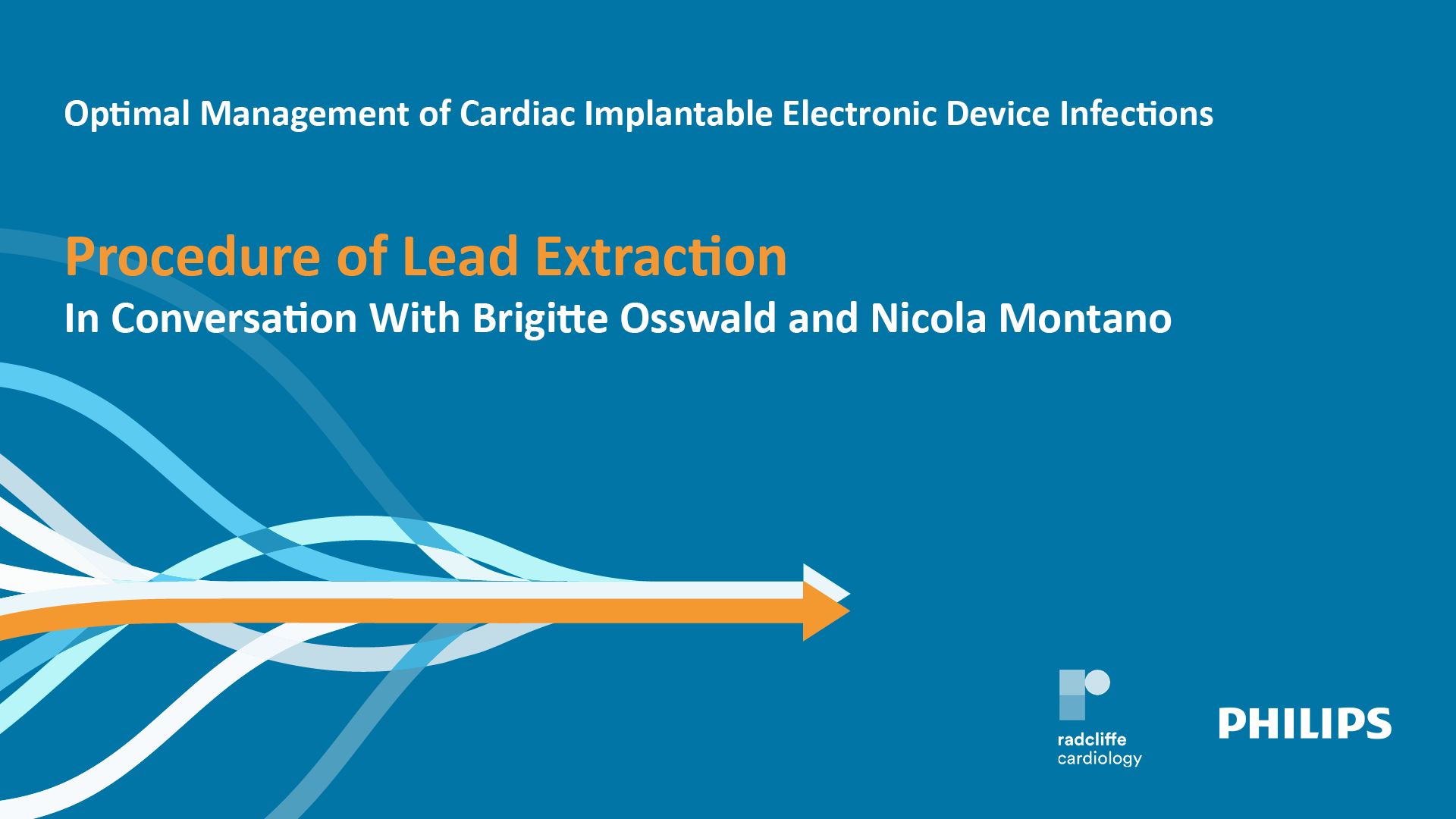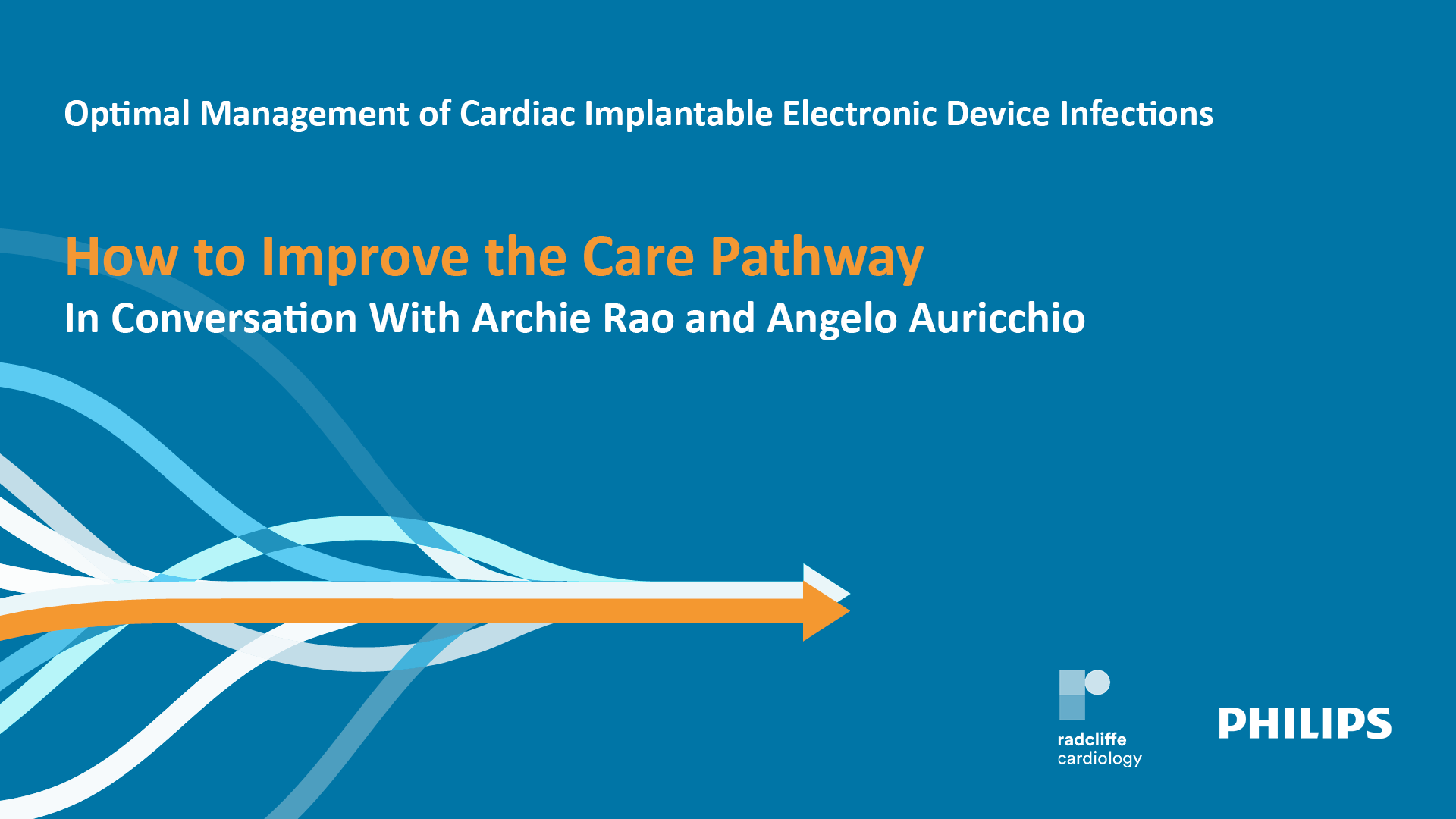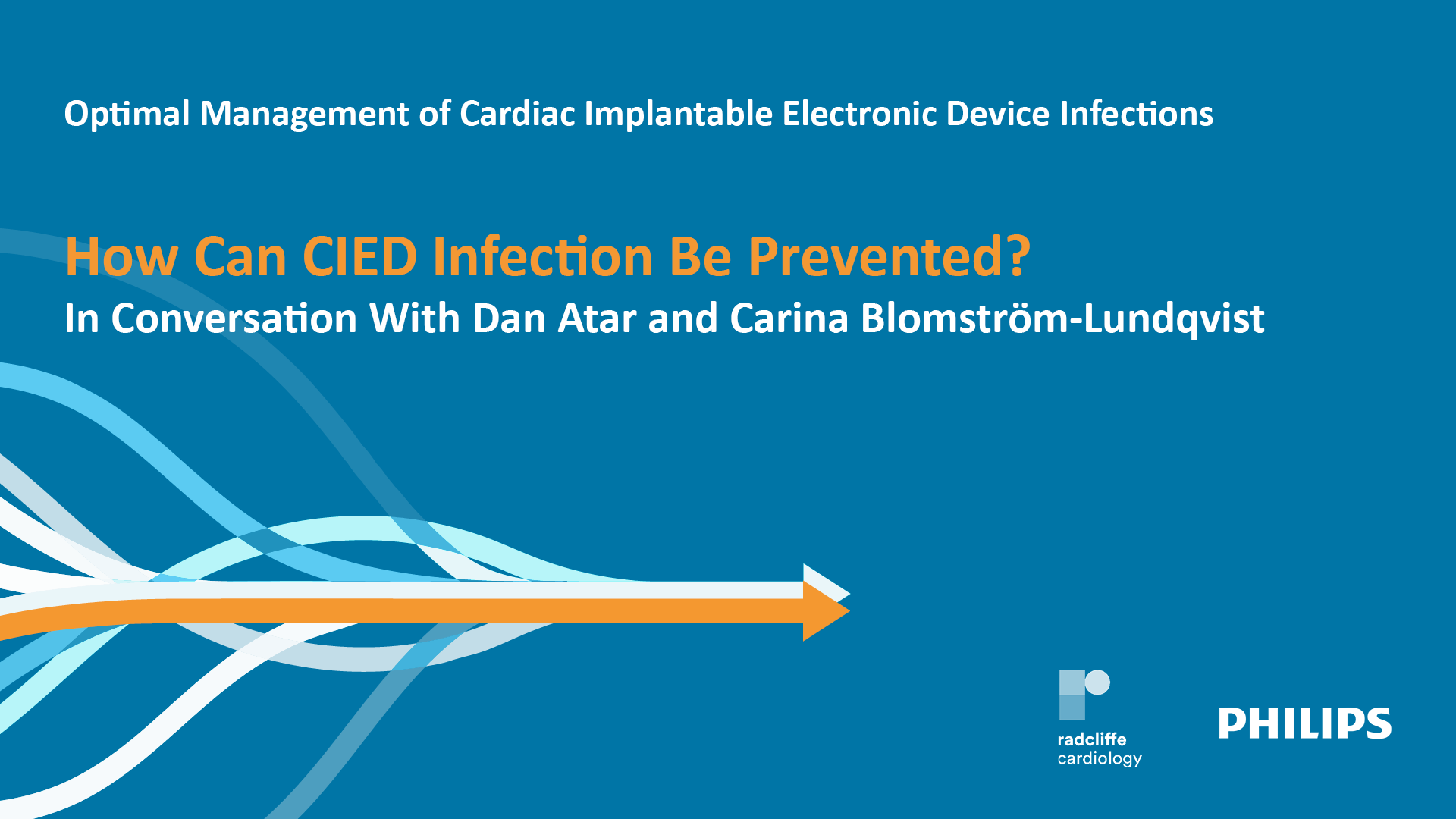Optimal Management of Cardiac Implantable Electronic Device Infections
Published: 21 February 2023
-
Views:
 8000
8000
-
Likes:
 7
7
-
Views:
 8000
8000
-
Likes:
 7
7
-
 13m 16sPart 1 What is a CIED? In Conversation With Archie Rao and Angelo Auricchio Angelo Auricchio, Archana Rao
13m 16sPart 1 What is a CIED? In Conversation With Archie Rao and Angelo Auricchio Angelo Auricchio, Archana Rao
-
 9m 50sPart 2 How to Recognise and Treat CIED Infection: In Conversation With Carina Blomström-Lundqvist and Archie Rao Carina Blomström-Lundqvist, Archana Rao
9m 50sPart 2 How to Recognise and Treat CIED Infection: In Conversation With Carina Blomström-Lundqvist and Archie Rao Carina Blomström-Lundqvist, Archana Rao
Overview
Although rare, the occurrence of a pacemaker or a defibrillator infection is an important complication which can and must be treated fast and effectively. On a weekly basis the story unfolds: how to best manage cardiac implantable electronic device (CIED) patients when their device becomes infected and gather insights from physicians with different specialties in an interactive setting.
Click here to listen to the podcast versions.

Learning Objectives:
- What CIEDs are, what benefits they bring to a patient and potential complications
- How to manage a CIED patient and which signs to look out for
- Why antibiotics are ineffective against CIED infection
- Which steps to take once a CIED infection is suspected
- The procedure of lead extraction and its safety profile
- The emotional journey for patients if referral is delayed
- How to improve the patient care pathway
- How one can help prevent CIED infection
Target Audience:
- Physicians who manage patients with a CIED
- Key departments include cardiology, infectiology, renal, emergency department and care of elderly
More from this programme
Part 1
Episode 1: What is a CIED?
Patients with a cardiac implantable electronic device (CIED), like a pacemaker or a defibrillator, can be of all ages and have different types of implants. You have probably encountered at least one of these in your everyday practice. In this episode, Angelo Auricchio and Archie Rao, both specialists in this area, will discuss types of CIEDs and what they do. They will highlight potential complications with focus on infection. CIED infection is frequently under-recognised and potentially life-threatening. The good news is, it is treatable.
Part 2
Episode 2: How to Recognise and Treat CIED Infection
Although rare, infection of a pacemaker or a defibrillator is an important complication which must and can be treated effectively. Cardiac electronic implantable device (CIED) infection is a Class I indication for extraction but recent data has demonstrated that less than 2 in 10 patients receive appropriate treatment. Prof Carina Blomström-Lundqvist, Swedish Professor of Cardiology, and Dr Archie Rao, British consultant cardiologist, are both passionate about this topic. Carina Blomström-Lundqvist is the lead author of the European CIED infection guidelines and Archie Rao has led a gap analysis into the knowledge of CIED infection and treatment. They explain how to recognise a patient at risk and what to do to provide best outcomes for your patient.
Part 3
Episode 3: Why Do Antibiotics Fail With CIED Infection?
Although rare, cardiac implantable electronic device (CIED) infections may occur at any timepoint in the lifecycle. It is important to remain alert and recognise signs early. Traditionally, antibiotics alone are used to treat infection. But for CIED infections, when treated with antibiotics only, the relapse rate varies between 50 and 100 percent. But why is that? Dan Atar, Editor-in-Chief of the scientific journal ‘Cardiology’, and infectiologist Stefan Hagel, not only challenge the traditional point of view but tear down the decades of belief which surround it. Why are antibiotics not doing the job? What are the consequences? What is the solution? Why are infections sometimes overlooked and what is the action to change that in your practice?
Part 4
Episode 4: Lead Extraction is the Solution to Treat CIED Infection
Infection of a cardiac electronic implantable device (CIED) is a rare, but serious complication. We now know that, because of the appearance of biofilm on implants, these infections cannot be treated by antibiotics alone. As such, Worldwide Cardiac Society guidelines recommend complete system removal of all hardware, including the leads, when an infection is present. Although the guidelines are clear, too many patients continue to not get the appropriate treatment. Why is that? Mauro Biffi and Carina Blomström-Lundqvist, both experts in the field of lead extraction, see a lot of patients fall through the cracks. They discuss why and what the consequences are of not extracting in time but also: what is the recommended care pathway to improve the outcomes.
Part 5
Episode 5: Procedure of Lead Extraction
Infection of a cardiac electronic implantable device (CIED) is a rare, but serious, complication. When this happens, the removal of the entire system, generator and leads, is the only correct way to treat the infection. What happens during a procedure with lead extraction? Brigitte Osswald, an expert in the field who has performed more than 3,500 lead extraction procedures, talks to Nicola Montano, a physician in internal medicine, about the fundamentals of the procedure and explains why and how this is lifesaving for her patients.
Part 6
Episode 6: Patients Stories of a CIED Infection
When the pacemaker or the defibrillator of a patient becomes infected, and if it's not immediately treated correctly, it can be a very emotional journey for the patient. Prof Biffi and Prof Ferreira have treated many CIED infection patients and often see cases where treatment was inappropriate or unnecessarily delayed. They share two touching patient stories with Prof Nicola Montano, physician in internal medicine. They discuss how these patients fell through the cracks of the diagnostic and therapeutic pathway and the devastating consequences for the patient.
Part 7
Episode 7: How to Improve the Care Pathway
An infection can have serious consequences for patients with a pacemaker or defibrillator when not treated appropriately. In this episode, Angelo Auricchio and Archie Rao explore which practical changes can be made to your clinical setting to improve these patients’ pathway.
Part 8
Episode 8: How Can CIED Infection Be Prevented?
Patients with a pacemaker or defibrillator have a risk of having a device-related infection. Discover in this episode which actions can be taken to reduce the risk for infection. From pre-procedure planning to post-operative care, Dan Atar, Editor-in-Chief of the scientific journal ‘Cardiology’, and Carina Blomström-Lundqvist, lead author on the international consensus document addressing this topic, will discuss preventative measures for CIED infection.”
Faculty Biographies
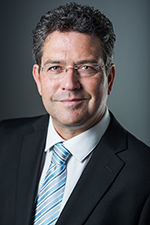
Dan Atar
Professor of Cardiology
Prof Dan Atar is Head of Research and Professor of Cardiology at the University of Oslo, Oslo, NO. He studied medicine in Basel and was then trained in internal medicine and cardiology.
Prof Atar joined John Hopkins University in Baltimore (1991–1994) and the University of Copenhagen, where he worked as a senior cardiologist. From 1997 to 1998 Dan Atar served as senior physician, supported by the Cloëtta Foundation of Cardiology at the University Hospital of Zurich.
Prof Atar has written over 480 articles and book chapters (H-index 78) and holds the fellowship-titles FESC, FACC, FEHRA and inaugural FAHA. He served as Chairman of the ESC Working Group on Cardiovascular Pharmacotherapy. He was on several ESC guideline writing committees, amongst others the 2010, 2012 and 2016 ESC Guidelines on Atrial Fibrillation, the 2012 STEMI-Guidelines and the 2018 Universal Definition of AMI. In 2012 Professor Atar was elected as Councilor and Board member, in 2014 as Vice…
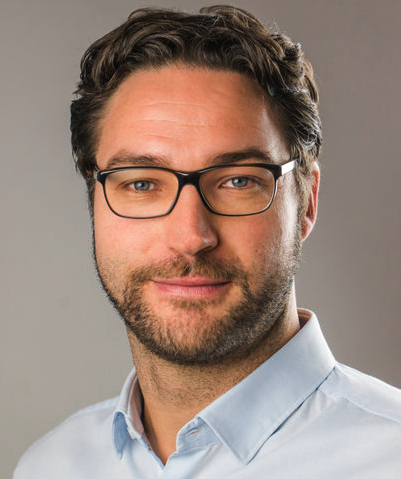
Stefan Hagel
Assistant Medical Director / Consultant
Dr Stefan Hagel graduated in 2005 from the Jena Medical School. He is a specialist in internal medicine and infectious diseases and currently serves as Assistant Medical Director / Consultant at the Institute for Infectious Diseases and Infection Control and Center for Sepsis Control and Care at the Jena University Hospital, Jena, DE.
His main research interests include management of sepsis, bloodstream infections and endocarditis. Dr Hagel received his Master of Science in clinical research and translational medicine at the University of Leipzig and has performed several Investigator Initiated Trials as principal investigator in the field of infection control and antimicrobial therapy.






